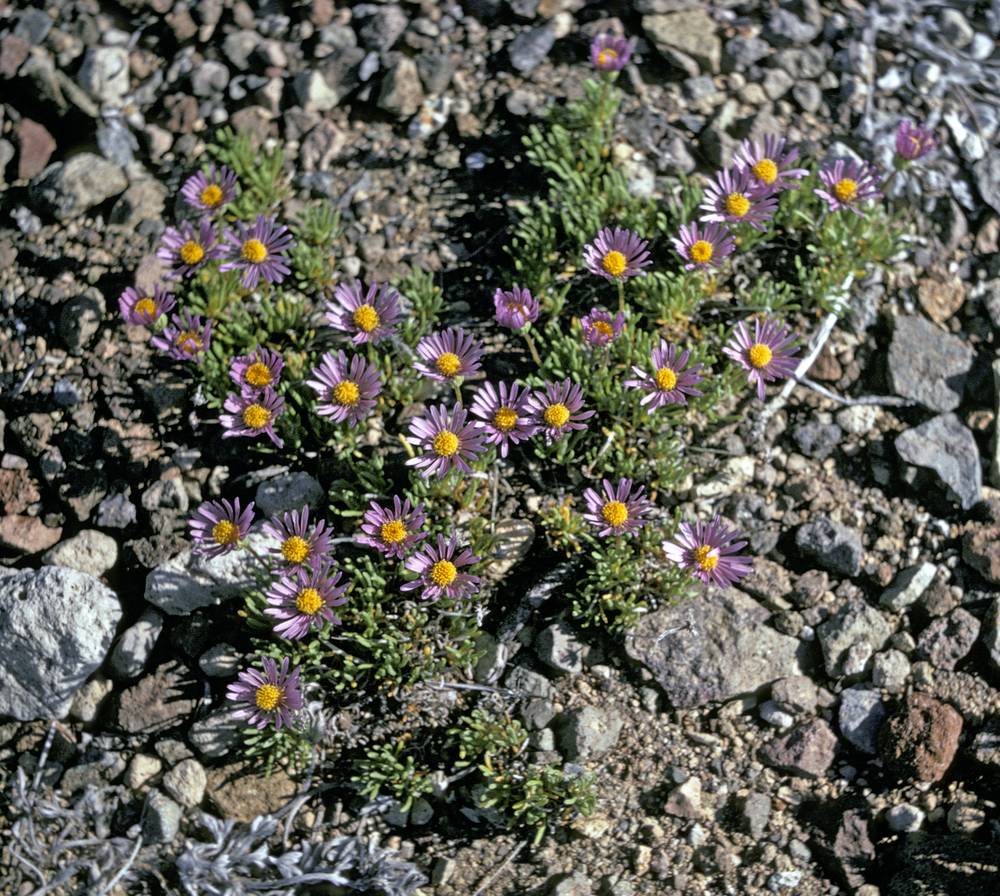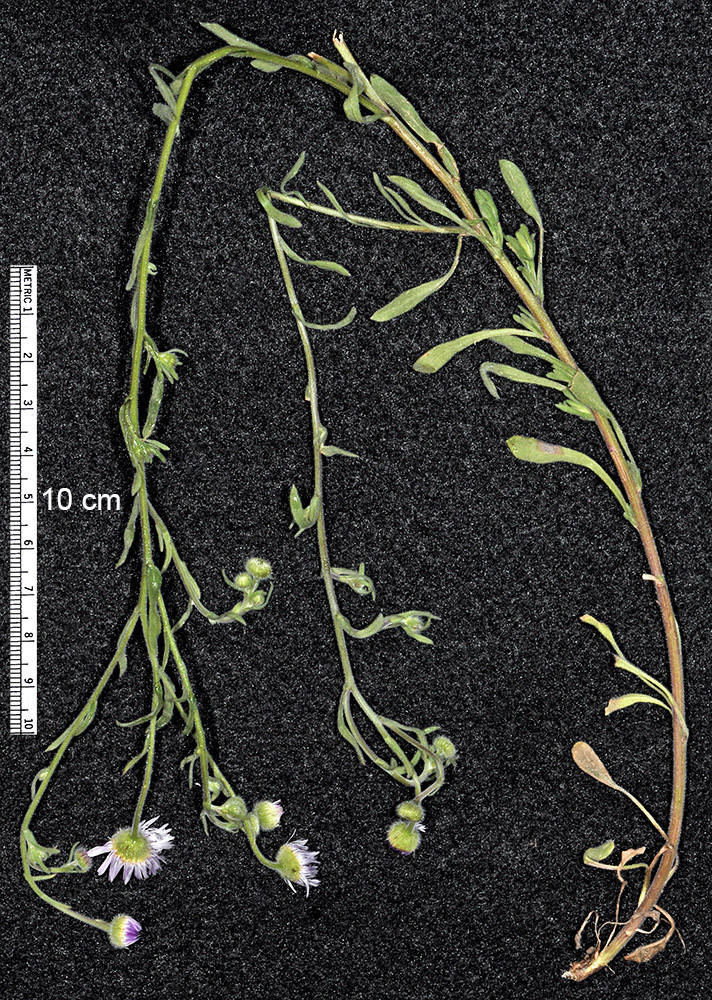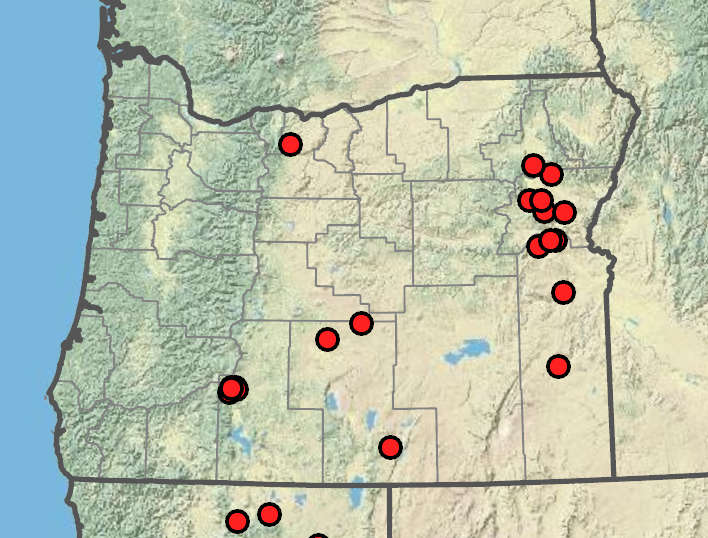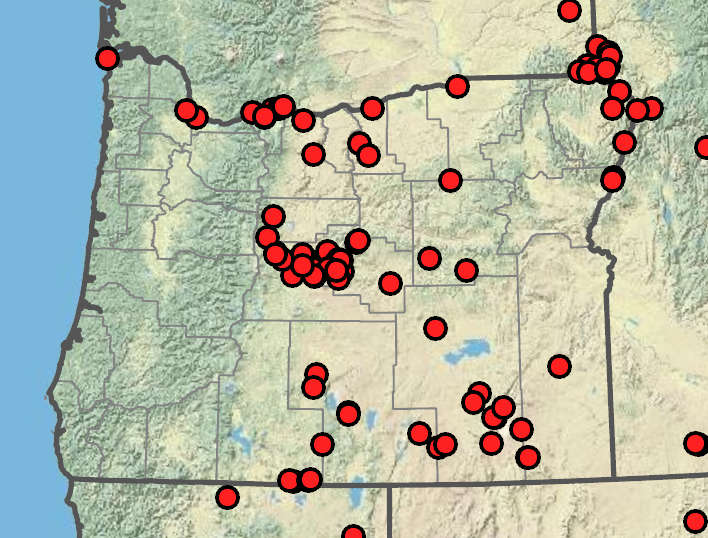Erigeron elegantulus
Erigeron divergens
dwarf blue fleabane, volcanic fleabane
diffuse daisy, spreading fleabane
erect to basally ascending, sparsely to moderately strigose, eglandular.
erect, ascending to decumbent, densely pilose to sparsely hirsute, minutely glandular at least distally.
persistent, linear to filiform, 20–50 × 0.5–1 mm, white, bases sheathing;
margins entire;
tips round to acute or acuminate;
surfaces sparsely to moderately strigose.
persistent or withering by flowering, spatulate, 20–80 × 5–10 mm;
margins entire or with 1–2 coarse teeth;
surfaces moderately to densely strigose, usually eglandular.
abruptly reduced and usually restricted to basal ? of stem, bases sheathing.
numerous and well developed, elliptic, obovate, or linear, 5–30 × 1–4 mm, usually slightly reduced distally;
surfaces densely strigose to villous.
3–5 × 8–11 mm.
2–4 × 6–10 mm.
15–30, lavender to purple;
rays 3–8 × 0.7–1.3 mm.
75–150, light purple to lavender;
rays 2–5 × 0.25–0.6 mm.
corollas 2.5–3.5 mm.
corollas 2–3 mm.
in 3–4 unequal series;
surfaces sparsely strigose, eglandular.
in 2–3 series, usually with dark green or brown medial area and lighter colored stripe;
surfaces moderately to densely hirsute or strigose, moderately to densely glandular.
1–2 mm, nearly glabrous to sparsely strigose;
inner pappi of numerous barbellate bristles.
0.75–1 mm, glabrous to very sparsely strigose;
inner pappi of numerous barbellate bristles.
1, radiate.
1–20+ in corymb-like arrays, radiate.
=27.
=18, 27, 36.
Erigeron elegantulus
Erigeron divergens
Rocky areas, sagebrush, coniferous forests. Flowering Jun–Aug. 700–2500 m. BR, BW, Casc, Owy. CA. Native.
Dry open areas, roadsides, streambanks. Flowering May–Sep. 50–2200 m. BR, BW, Casc, Col, ECas, Est, Lava. CA, ID, WA; north to British Columbia, northeast to Alberta, east to SD, southeast to TX, south to Mexico. Native.
James Riser, Stephen Meyers
James Riser, Stephen Meyers
- Local floras:
BC,
CA,
OR,
WA
- Local Web sites:
CalFlora,
CalPhotos,
Flora NW,
PNW Herbaria,
Turner Photog.
WildflowerSearch
iNaturalist (observations)
USDA Plants Database
- LBJ Wildflower Center
- SEINet
- Plants of the World Online
- Encyclopedia of Life
- Wikipedia
- Google Image Search





